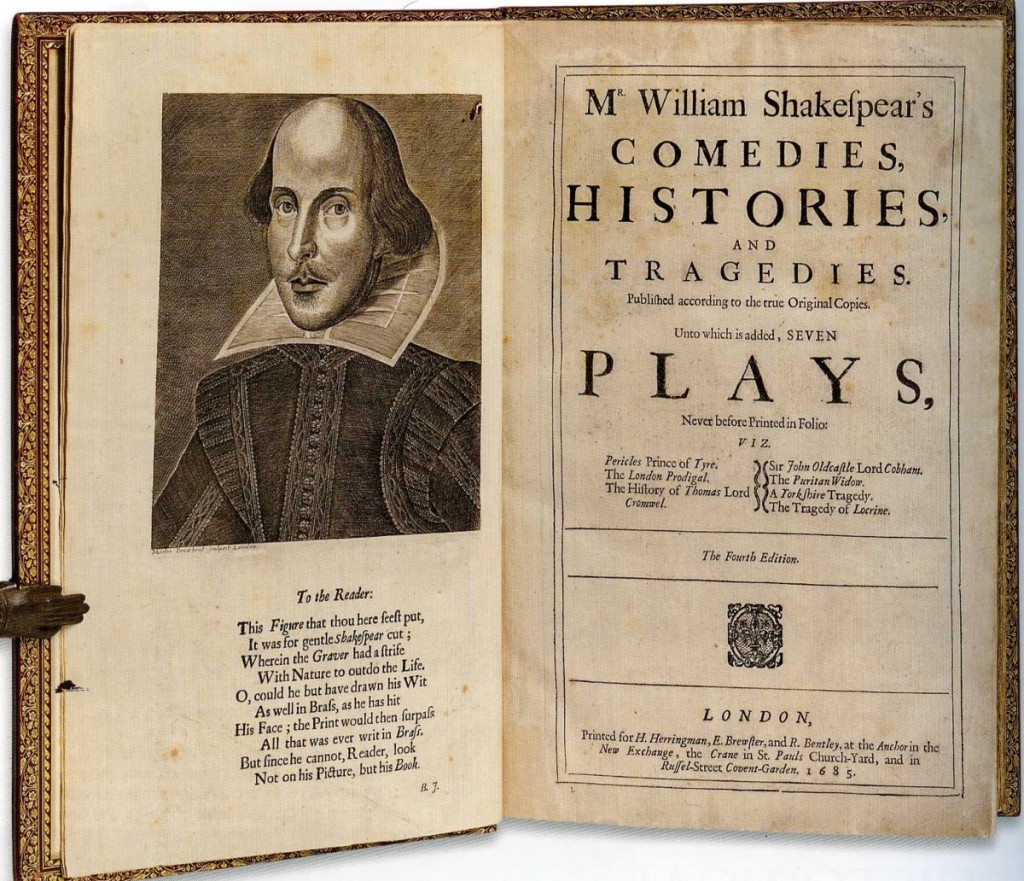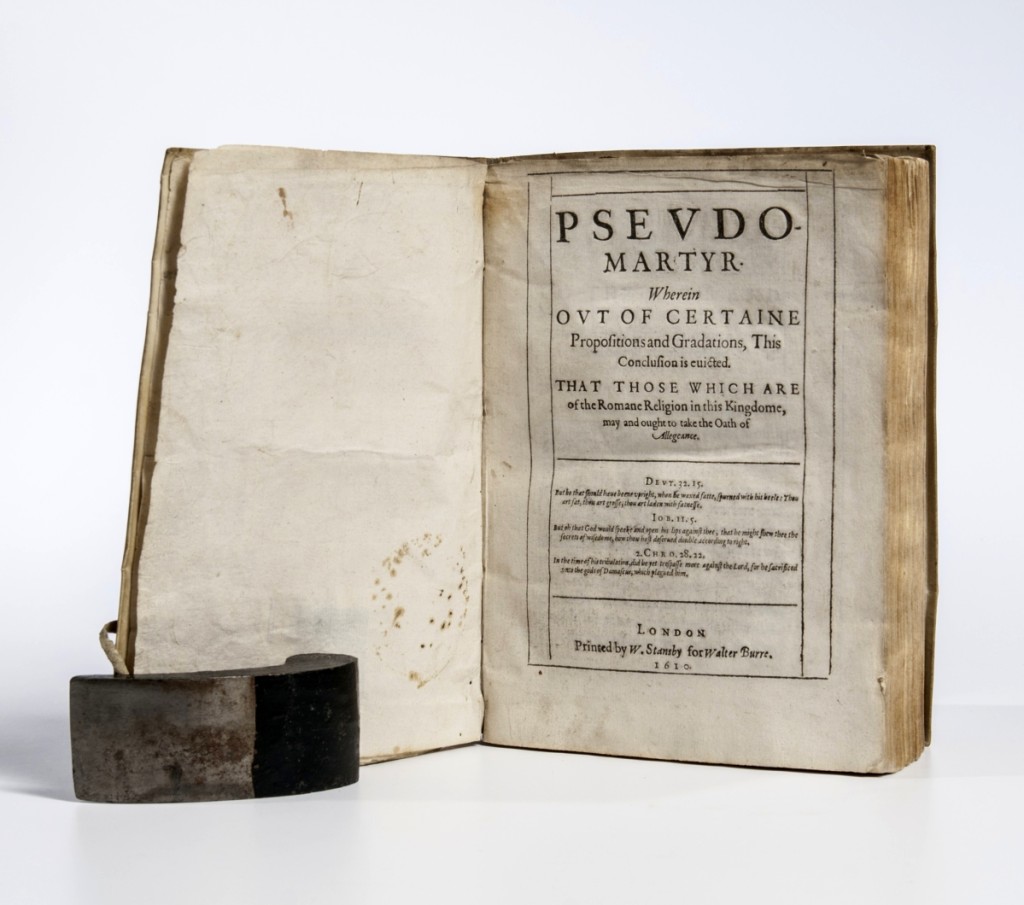
The 1685 Fourth Folio of Mr William Shakespear’s Comedies, Histories, and Tragedies, published according to the true Original Copies, which sold for $50,430, was the top priced book in the sale. The title page stated: “Seven Plays, Never before Printed in Folio.”
Review and Onsite Photos by Rick Russack
BOSTON – On July 20, Skinner offered nearly 200 books that were printed before 1700. The selection was just a small percentage of the collection assembled by Californians Howard and Linda Knohl, which, with more than 4,000 titles, is the world’s largest privately owned collection of English language first-edition books printed before 1700. It contains the founding works of modern sciences, such as botany, anatomy and medicine, as well as early accounts of travel, exploration and warfare. There is also a strong representation of Restoration-era plays and other influential works.
Many of the books were printed in the Fifteenth and Sixteenth Centuries and include first editions of works by Erasmus, Thomas More, Francis Bacon, John Milton, Galileo and many others. Topics that most people don’t associate with the period are also represented, including works on hunting, cider making, child-rearing, swimming and surveying.
Howard Knohl was a physician, and the offerings in this sale include several early books on folk and herbal remedies, providing an interesting look at English medical practice dating back to the mid-1500s. Skinner’s catalog descriptions were bibliographically correct and detailed. The crowd in the salesroom was small but active, successfully bidding on several lots. Internet and phone bidding were also available.
Books are not the only thing the Knohls collect and study. Their diverse collection includes American coins, clocks, drawings, more than 20,000 match safes, meerschaum pipes, and more than 260 paintings by European masters of the Seventeenth through Nineteenth Centuries. The collection has its own informative website – www.theknohlcollection.com.
Devon Eastland, director of Skinner’s rare book department, had the opportunity to select about 200 books from the collection for this auction, which grossed $726,000, and she chose a cross-section of the collection. Eastland was a philosophy major at Harvard and one day she visited some of the bookstores in Harvard Square, several of which no longer exist. She said, “I saw, and was able to handle, books printed in the 1600s and they weren’t all that expensive. I loved them.” She made a purchase – a book printed in 1675 for which she paid $175. “The Harvard libraries were a great place to learn about early books, and other languages, so I spent a lot of time there. I was 22 when I graduated and decided to see if I could make a living as a book dealer and I was also doing bookbinding work. One thing leads to another, and with my husband, we opened a bookstore in Harvard Square. I’ve been with Skinner since 2011.”
The sale was led, as expected, by a fourth folio Mr William Shakespear’s Comedies, Histories, and Tragedies, published according to the true Original Copies, which sold for $50,430. The title page included the statement: “Seven Plays, Never before Printed in Folio.” It was printed in London in 1685, and facing the title page was an engraved portrait of Shakespeare by Martin Droeshout. Bringing just a little less, $46,125, was one of the early herbal books, a rare copy of The Great Herball Newly Corrected, printed in London by Thome Gybson in 1539. Only three copies are known to exist in the United States, and the last one to come up at auction was an incomplete copy that sold in 1949. Skinner’s description said, “This work is the fourth printed English translation of the Circa Instans, a popular Medieval herbal, which circulated in manuscript form before the advent of printing. The success of the Circa Instans resulted from its pragmatic, user-friendly structure, which made it especially useful to medical practitioners. The collection provides a selection of about 270 natural substances derived from plants, animals and minerals. Plants are the most consistently represented category, with everyday, readily available substances appearing more frequently than rare or exotic ones.”

Pseudo-Martyr was printed in 1610. Written by a converted catholic, it advised British Roman Catholics to take the Oath of Allegiance to James I. It reached $21,525.
A copy of one of the early mathematical books, selling for $30,750, was Mathematical Collections and Translations the First Tome. It had been printed in London by William Leybourn in 1661. It was the first edition in English of Galileo’s Mathematical Collections and was illustrated with four folding engravings and many text diagrams. It also included works by Benedetto Castelli, Johannes Kepler and a letter about the arrangement of the solar system by Paolo Antonio Foscarini. Another early book, indicating the strong feelings of a previous owner, was a copy of Ranulphus Higden’s Polycronicon, translated by John Trevisa, with the 1357-1460 Continuation by William Caxton. It was printed in Westminster by Wynkyn de Worde in April 1495. Higden was a Benedictine monk, and a previous owner had crossed out the word “pope” each time it appeared in the text. Although incomplete, the book went for $30,750. A slightly later edition of the same work, with several illustrations, printed in Southwark by Peter Treveris for John Reyne, in 1527, reached $28,290.
An early description of the New World was written by a Spanish Jesuit Jose de Acosta, who had first traveled to the New World in 1570. Naturall and Morall Historie of the East and West Indies was printed in London by Val: Sims for Edward Blount and William Aspley in 1604. It was the first edition in English. In addition to notes on the natural history of the places he visited, including Peru (where he crossed the Andes), Panama and Mexico, Acosta also described Incan and Aztec customs and natural geographical features, such as tides, lakes, rivers and mineral resources. He was also responsible for bringing the first printing press to Peru in the 1570s. With numerous manuscript notes by a previous owner, the book sold for $15,990.
An early book about Africa and Asia, printed in London in 1555, The Fardle of Facions Conteining the Aunciente Maners, Customes, and Laws of the People Inhabiting the Two Parts of the Earth, Called Affrike and Asie, sold for $8,979, and a 1580 book about the New World realized $14,760. It was Ioyfull Newes out of the Newfound World, wherein are Declared the Rare and Singular Vertues of Divers and Sundrie Herbs, Trees, Oyles, Plants, & Stones. This book was the first work on Central and South American medicinal plants and discussed the uses and cultivation of New World plants with pharmaceutical benefits, including quinine, sassafras, cassava, rhubarb, ginger, curare, tobacco and many others.
After the sale, Eastland said, “We’re pleased with the sale and so is our consignor. That’s the important thing. We had strong international interest and bidding, which means that we’re getting to the right people. For the most part, results were pretty much in line with what we expected. We run two or three book sales a year, including the one that we do in November, which coincides with the Boston International Antiquarian Book Fair.”
All prices include the buyer’s premium as stated by the auction house. For more information, www.skinnerinc.com or 508-970-3293.




















